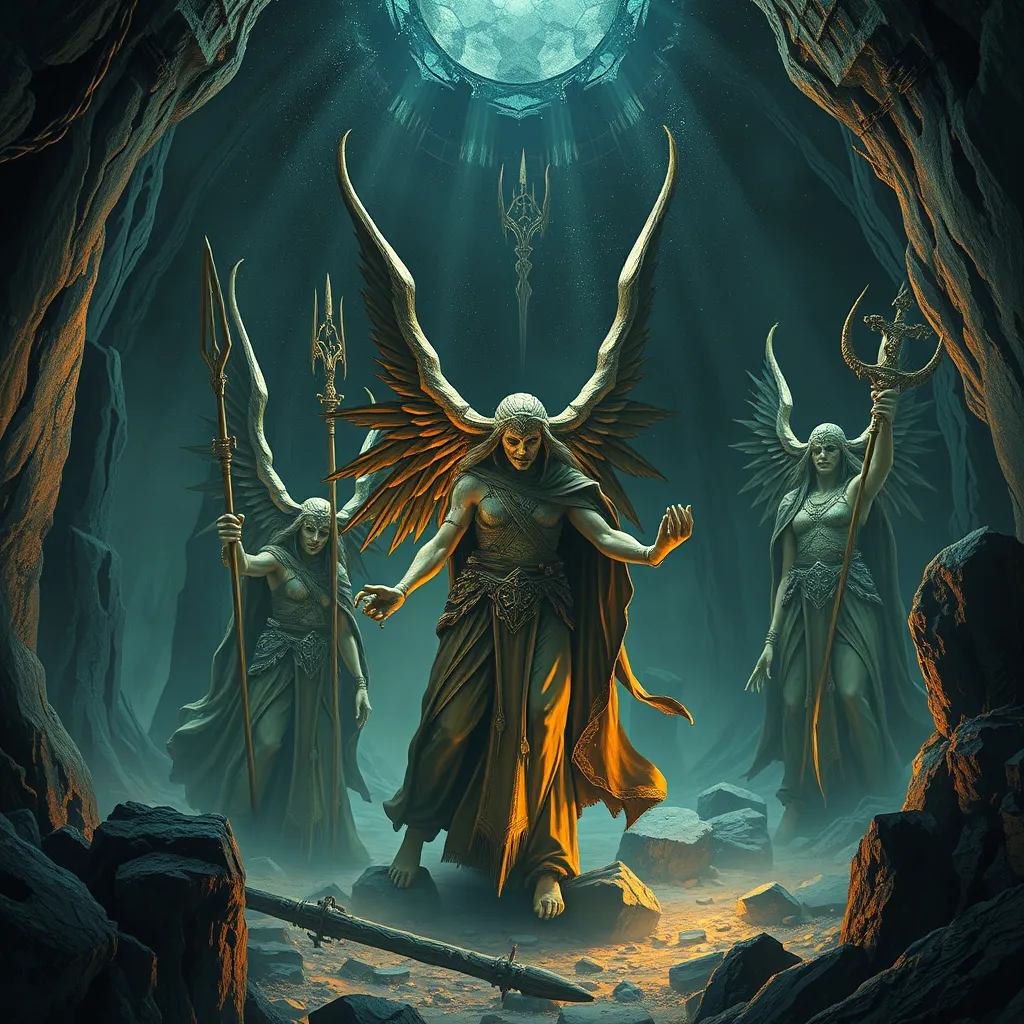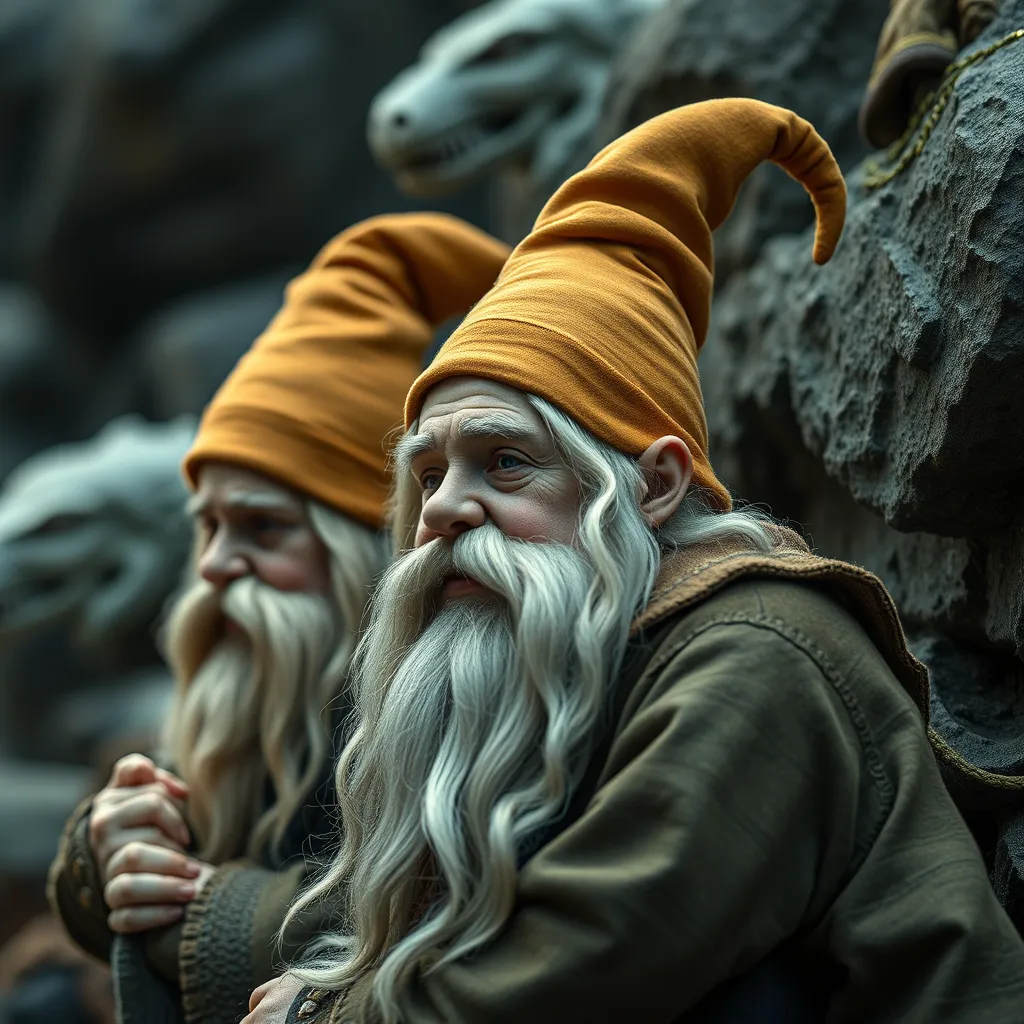Valkyries and the Underworld: Exploring the Role of the Choosers of the Slain in the Norse Afterlife
I. Introduction
Norse mythology is a rich tapestry of gods, heroes, and mythical beings, intricately woven together to explain the cosmos and humanity’s place within it. At the heart of these tales lies the significance of the afterlife, where the fates of warriors and the brave are intertwined with the gods. In this context, Valkyries emerge as pivotal figures, serving as the choosers of the slain and guiding spirits to their eternal destinies.
This article aims to explore the multifaceted roles of Valkyries in the Norse afterlife, examining their origins, responsibilities, and the cultural implications of these powerful female figures.
II. The Origins of Valkyries in Norse Mythology
A. Etymology and historical context of the term “Valkyrie”
The term “Valkyrie” is derived from Old Norse “valkyrja,” which translates to “chooser of the slain.” This etymology reflects their primary role in battle and the selection of warriors destined for Valhalla. The Valkyries are often depicted as supernatural maidens, endowed with both beauty and strength, embodying the fierce spirit of the warrior ethos.
B. Depictions of Valkyries in ancient texts and artifacts
Valkyries appear in various ancient sources, including the Poetic Edda and the Prose Edda, where they are described as armed maidens riding over battlefields on horseback. Archaeological findings, such as burial artifacts and carvings, also showcase Valkyrie imagery, emphasizing their importance in Viking culture and beliefs.
C. The connection between Valkyries and Odin
In Norse mythology, Valkyries are closely associated with Odin, the Allfather and chief of the gods. They are often seen as his emissaries, tasked with selecting those who will die in battle and bringing the honored dead to Valhalla, where they will serve Odin and partake in feasting and glory.
III. The Role of Valkyries as Choosers of the Slain
A. How Valkyries select the worthy warriors for Valhalla
The selection process carried out by Valkyries is not arbitrary; it is steeped in notions of valor and bravery. The Valkyries observe the battlefield, choosing those who have fought valiantly and honorably, ensuring that only the most deserving warriors are granted a place in Valhalla.
B. The criteria for selection and the significance of valor in battle
Valor in battle is paramount for selection by the Valkyries. The criteria often include:
- Bravery in combat
- Honor and loyalty to comrades
- Skill and prowess as a warrior
This selection process reinforces the Norse cultural values of courage and honor, emphasizing that the afterlife is reserved for those who exemplify these traits.
C. The journey of the chosen warriors to the afterlife
Once selected, the Valkyries guide the chosen warriors on a mystical journey to Valhalla, often depicted as a grand hall where the slain warriors will reside. This journey is not just a physical transition but also a symbolic passage into a new realm of existence, where they will continue their warrior legacy.
IV. Valkyries and Valhalla: The Hall of the Slain
A. Description of Valhalla and its importance in Norse cosmology
Valhalla, or “Hall of the Slain,” is a magnificent hall located in Asgard, ruled by Odin. It serves as the final resting place for those warriors chosen by Valkyries, where they will engage in eternal feasting, fighting, and camaraderie. Valhalla is central to Norse cosmology, representing the ideal afterlife for brave warriors.
B. The role of Valkyries in Valhalla: serving the slain warriors
In Valhalla, Valkyries serve a critical role as attendants to the slain warriors. They are responsible for:
- Preparing feasts for the warriors
- Ensuring the warriors remain entertained and engaged in battle training
- Upholding the honor of the warriors and maintaining the spirit of camaraderie
This service underscores the Valkyries’ dual nature as both fierce warriors and nurturing figures, balancing strength with hospitality.
C. The concept of eternal glory and feasting in the afterlife
The concept of eternal glory in Valhalla is intertwined with the idea of continuous feasting and celebration. Every day, the chosen warriors engage in battles, only to feast and revel at night, highlighting the Norse belief in the importance of honor and community in the afterlife.
V. Valkyries in the Underworld: Hel and Other Realms
A. Overview of Hel and its significance in Norse beliefs
Hel, in Norse mythology, is the realm of the dead ruled by the being of the same name. It is distinct from Valhalla and serves as the final resting place for those who did not die bravely in battle. Hel is often depicted as a cold, shadowy realm, contrasting sharply with the honor of Valhalla.
B. The relationship between Valkyries and the underworld
While Valkyries primarily guide warriors to Valhalla, there is a nuanced relationship with Hel. In certain narratives, Valkyries may also escort souls to Hel, particularly those who did not meet the criteria for valor. This duality reflects the complexity of life and death in Norse mythology.
C. Contrasting the roles of Valkyries in Valhalla and Hel
The roles of Valkyries differ significantly between Valhalla and Hel. In Valhalla, they are celebrated as life-giving figures, while in Hel, they may serve a more somber role, guiding souls to their final resting place. This contrast highlights the multifaceted nature of these mythological beings.
VI. Valkyries in Popular Culture and Modern Interpretations
A. Influence of Valkyries in literature, film, and art
Valkyries have transcended their mythological roots, influencing various forms of modern media. From Wagner’s operas to comic books and films, Valkyries are often portrayed as powerful and dynamic figures, capturing the imagination of contemporary audiences.
B. Contemporary reinterpretations of Valkyries and their symbolism
Modern reinterpretations often explore themes of empowerment, femininity, and strength associated with Valkyries. They are frequently depicted as symbols of resistance and courage, resonating with contemporary discussions about gender and power.
C. The resurgence of interest in Norse mythology in modern media
The resurgence of Norse mythology in popular culture has sparked a renewed interest in Valkyries. As people explore their stories, they uncover deeper meanings and connections to contemporary values, solidifying the Valkyries’ place in both history and modern discourse.
VII. Gender and the Valkyrie Archetype
A. Examination of gender roles within Norse mythology
Norse mythology presents a complex tapestry of gender roles, where Valkyries stand as powerful female figures in a predominantly male-dominated mythos. Their roles challenge traditional notions of femininity and power, positioning them as both warriors and caretakers.
B. The portrayal of Valkyries as powerful female figures
Valkyries are often depicted as embodiments of strength, wisdom, and independence. They possess the agency to choose the slain, asserting their influence over life and death, thereby redefining the female archetype in mythology.
C. Implications of the Valkyrie archetype in discussions of femininity
The Valkyrie archetype invites critical exploration of femininity, challenging stereotypes and presenting a multifaceted view of women’s roles in mythology and society. This portrayal encourages discussions about women’s empowerment and strength in various cultural contexts.
VIII. Conclusion
In conclusion, Valkyries occupy a vital position in the Norse afterlife, serving as choosers of the slain and guardians of honor. Their dual roles in Valhalla and Hel illustrate the complexity of life, death, and the afterlife in Norse beliefs. As powerful female figures, they continue to inspire discussions about gender and the human experience.
The enduring legacy of Valkyries invites further exploration into their cultural significance and the rich mythology surrounding them. As interest in Norse mythology grows, the stories of Valkyries remain a fascinating subject for both scholars and enthusiasts alike.



